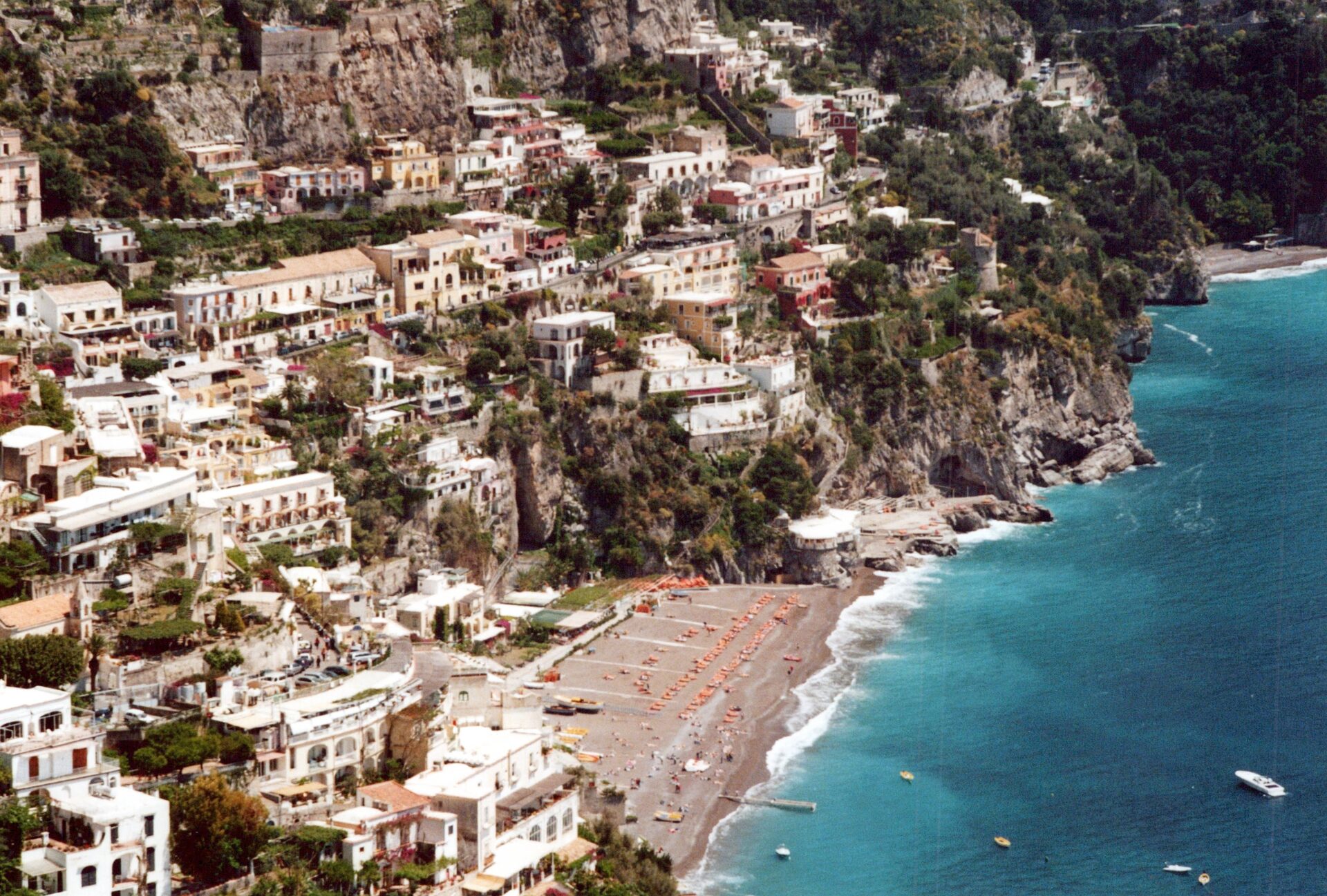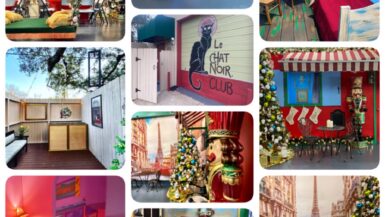You’ve heard Dean Martin sing about it. It’s pizza and chaotic driving conditions are legendary. Naples, or Napoli, as it’s known by its inhabitants is only a couple of hours south of Rome and often gets ignored by first time tourists to Italy, but it’s surrounding sites make for some of the most exciting areas of the entire country. From amazing ruins to beautiful coastline, you’ll be blown away at what this area has to offer.
One of the best archaeological preserved sites in the world is found half an hour south of the city of Naples. Pompeii was a flourishing Roman city for hundreds of years that was instantly wiped out one afternoon during the Vesuvius eruption in 79 AD. The entire town was covered with ash and preserved from the elements under a volcanic “blanket” for 1500 years. Since it’s “rediscovery” 250 years ago, visitors flock there from all over the world making it one of Italy’s most popular destinations. The streets and buildings give the traveler an accurate depiction of what Roman life was like right at the moment of the volcanic catastrophe. You can visit villas complete with statues and intact frescoes. Several of the residents who were unable to escape have been immortalized with plaster casts (created by pouring plaster in the hollow areas of the volcanic material) of their bodies scattered throughout the city displays. Visitors can see the Roman baths, shops and even a brothel which still contains frescoes of different sexual options that patrons could order. Nearby Herculaneum was destroyed at the same time and shows visitors an affluent seaside town that is also well preserved with impressive murals and Roman baths. Both sites have UNESCO status. Neither should be missed.
Vesuvius looms over the city of Naples and although it has been erupting for thousands of years, it’s been inactive since 1944. Modern scientific methods are used to measure changes in Vesuvius to give ample warning so that residents can evacuate to other parts of the country before an eruption occurs. If the thought of a random lava flow or being covered with “hot liquid magma” doesn’t dissuade you, you can actually drive nearly all the way the top of the volcano and walk the remaining 660 feet to the summit. It’s a popular national park with hiking trails. A funicular serviced the peak from end of the 19th century until 1944 when it was destroyed by the last eruption. One of the most recognizable Italian songs in the world “Funiculi! Funicula!” was written by Luigi Denza in the Neapolitan language when the tram first opened in 1880. The song compares the singer’s lover “Nanette” to the volcano (not in a good way) and invites her to visit the top of Vesuvius with the singer by funicular. The invitation to visit the volcano still stands for travelers who want to get an amazing view of the Southwest coast of Italy.
The Amalfi coast is quite simply one of the most stunning coastlines in the world. The stretch of cliffs and towns that extend from the town of Sorrento to Amalfi is accessible by winding panoramic roads with amazing views of neighboring Capri and other nearby islands. Lemon and olive trees line the roads and seem to be perpetually bursting with fruit. Local vendors have roadside stands to squeeze fresh fruit juice for you or sell you beautiful pastel paintings at one of the many stops. You might notice the paintings look very familiar. The Amalfi coast is one of the most popular subjects for Italian paintings and it’s probable that you’ve seen some of the views countless times in art galleries. If you have time, spend the night in Positano and soak up the beauty of the area. Don’t forget to try the pizza of course.
Thirteen percent of Americans consume pizza on any given day. You can thank Naples for that. The area is credited with creating the world’s first modern pizza and it was brought to the states by Italian immigrants in the 19th century. One myth prevails that when Queen Margherita was visiting Naples in the late 1800s, she preferred the Neapolitan style pizza made with basil, mozzarella and tomato sauce, It is probably no coincidence that these ingredients are red, green and white just like the colors of the Italian flag. The pizza was promptly named after her and Margherita pizza is still one of the most popular recipes today. Neapolitan ice cream, another famous Italian invention, was originally made by joining slabs of pistachio ice cream, strawberry and vanilla (to also mimic the Italian flag). Americans replaced the pistachio with chocolate.What does all this food history mean to you? It means you need to try the gelato (Italian ice cream) and the pizza! Try everything! Some of the best food in the world comes from the Napoli area. It’s difficult to get a bad meal.
Limoncello, for the uninitiated might be a little shocking at first taste. This world famous liqueur is made from the lemons that grow in the area and is entrenched in the culture of the region. There are entire stores that sell nothing but merchandise featuring lemons and all things derived from them. You’ll want to try a sip of this famous elixir, so what better way than visiting the source? There are little factories scattered all through the area that offer guests samples of the famous bright yellow “digestive” as well as candies, and lemon cream liqueurs (think Bailey’s with lemon). Some of these sites offer to show you the manufacturing and bottling process as well as the lemon groves. There are also tours available that combine a visit to a limoncello factory with other “foodie” visits such as wine tasting, olive oil production, and cheese making. You’ll want to buy a bottle or two to take home.
If you have time to visit the small island of Capri, you’ll find many similarities to the mainland, but this little touristy spot has been a resort since Roman times and is probably most famous for its Blue Grotto. If the ocean isn’t too choppy, travelers can take a boat to the entrance of a cave only accessible by sea. Once inside, the white sand on the bottom reflects the small amount of light and creates an otherworldly blue glow from the water. It’s a beautiful sight and there’s only a handful of places in the world where you can see such a thing. Capri has a funicular to get to the higher areas of the city as well as buses to get you around once you’re there. There’s no cars allowed for most of the year and it’s really pointless to bring one anyway since it’s so small. The only way to get to Capri is by ferry or helicopter.
No matter where you go in this part of Italy you’ll be happy you came. This is a beautiful part of the world and there’s always something new and exciting that will bring you back once you’ve discovered it.






Leave a reply
You must be logged in to post a comment.